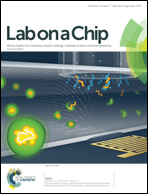Applications of three-dimensional (3D) printing for microswimmers and bio-hybrid robotics
Abstract
This article will focus on recent reports that have applied three-dimensional (3D) printing for designing millimeter to micrometer architecture for robotic motility. The utilization of 3D printing has rapidly grown in applications for medical prosthetics and scaffolds for organs and tissue, but more recently has been implemented for designing mobile robotics. With an increase in the demand for devices to perform in fragile and confined biological environments, it is crucial to develop new miniaturized, biocompatible 3D systems. Fabrication of materials at different scales with different properties makes 3D printing an ideal system for creating frameworks for small-scale robotics. 3D printing has been applied for the design of externally powered, artificial microswimmers and studying their locomotive capabilities in different fluids. Printed materials have also been incorporated with motile cells for bio-hybrid robots capable of functioning by cell contraction and swimming. These 3D devices offer new methods of robotic motility for biomedical applications requiring miniature structures. Traditional 3D printing methods, where a structure is fabricated in an additive process from a digital design, and non-traditional 3D printing methods, such as lithography and molding, will be discussed.


 Please wait while we load your content...
Please wait while we load your content...